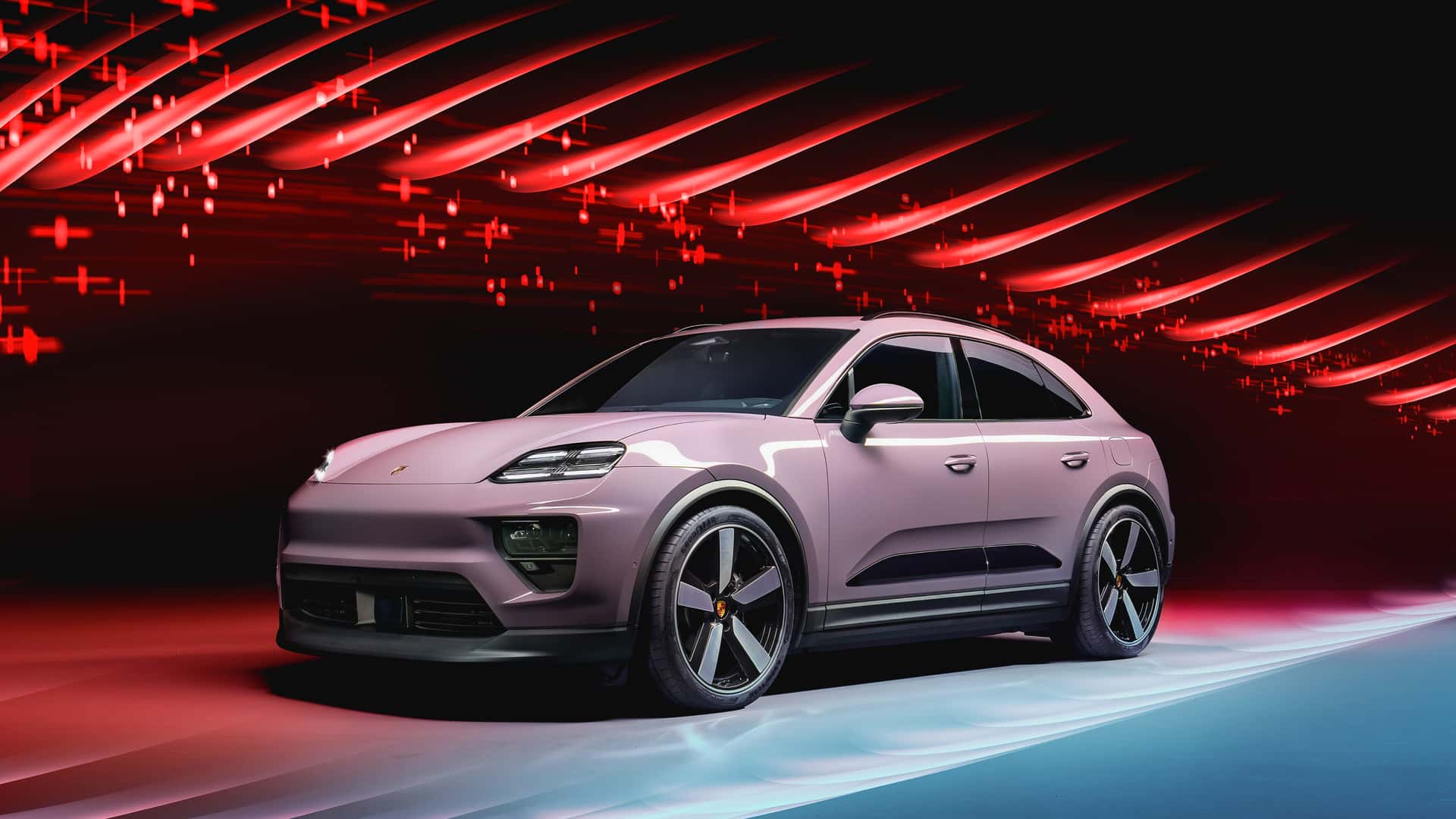China Market Headwinds: BMW, Porsche, And The Struggle For Growth

Table of Contents
Economic Slowdown and Shifting Consumer Sentiment in China
China's economic growth, once a double-digit phenomenon, has moderated significantly, impacting consumer spending across all sectors, including luxury goods. This economic slowdown is a major contributor to the China market headwinds faced by luxury automakers. The once insatiable appetite for premium vehicles is waning as consumers prioritize financial stability and practicality.
This shift is reflected in changing consumer preferences:
- Decreased disposable income affecting luxury purchases: Economic uncertainty leads to a decline in discretionary spending, impacting the demand for luxury cars.
- Growing preference for domestic brands over foreign luxury brands: The rise of high-quality, domestically produced vehicles, often at competitive price points, is eroding the market share of established foreign brands. Patriotism also plays a significant role in consumer choices.
- Shifting consumer focus towards value and practicality: Consumers are increasingly seeking vehicles that offer a balance of luxury and practicality, prioritizing fuel efficiency and technological features over sheer brand prestige.
Data from the China Association of Automobile Manufacturers (CAAM) shows a decline in luxury car sales in recent years, further emphasizing the impact of the economic slowdown on this sector. Understanding this shift in consumer sentiment is paramount to navigating the China market headwinds.
Increasing Competition from Domestic Automakers
The Chinese automotive industry has witnessed a remarkable surge in innovation and competitiveness. Domestic automakers are no longer simply producing budget-friendly cars; they're now offering sophisticated, technologically advanced vehicles that rival, and in some cases surpass, their international counterparts in terms of features and design. This intense competition is a significant aspect of the China market headwinds.
This rise is evident in several key areas:
- Examples of successful Chinese brands challenging luxury brands: Brands like Nio, Xpeng, and BYD are making significant inroads into the luxury market, offering competitive electric vehicles (EVs) with advanced features and appealing designs.
- Competitive pricing strategies adopted by domestic brands: Domestic automakers are often able to offer competitive pricing, leveraging lower manufacturing costs and government incentives.
- Focus on features that appeal to younger Chinese consumers: Chinese brands are adept at integrating cutting-edge technology and customization options that resonate with the preferences of younger, tech-savvy consumers.
The success of these domestic brands underscores the need for international luxury carmakers to adapt and innovate to remain competitive.
The Impact of Government Regulations and Policies
The Chinese government plays a significant role in shaping the automotive market through various regulations and policies. These policies, while aimed at promoting sustainable development and technological advancement, create additional China market headwinds for luxury automakers.
Key regulatory impacts include:
- Impact of stricter emission regulations on luxury car sales: Stringent emission standards necessitate significant investment in research and development for cleaner vehicles, impacting profitability.
- The influence of import tariffs on pricing and profitability: Import tariffs increase the cost of importing luxury vehicles, impacting their price competitiveness.
- Government incentives for electric vehicles and their effect on luxury car sales: Government subsidies for EVs are shifting consumer preference towards electric vehicles, putting pressure on luxury brands that haven't fully embraced the EV market.
Understanding and navigating these regulatory complexities is crucial for successfully operating in the Chinese market.
Adapting to the Changing Chinese Consumer: Strategies for Future Growth
To overcome the China market headwinds, luxury brands like BMW and Porsche need to adapt their strategies to the evolving Chinese market. This requires a multifaceted approach:
- Investing in electric vehicle (EV) technology and infrastructure: Significant investment in EV technology and establishing a robust charging infrastructure is essential to capitalize on the growing demand for electric vehicles.
- Developing localized marketing and product strategies: Tailoring marketing campaigns and product offerings to resonate with the unique preferences and cultural nuances of the Chinese market is vital.
- Building strong relationships with Chinese consumers through digital channels: Leveraging digital marketing and social media platforms to engage directly with Chinese consumers is crucial in today's digital landscape.
- Collaborating with domestic Chinese companies: Partnerships with local companies can provide valuable insights, access to the market, and help navigate the regulatory landscape.
Successful examples of brands adapting include those that have invested heavily in local production, created tailored marketing campaigns highlighting cultural relevance, and embraced digital channels for engagement and sales.
Overcoming China Market Headwinds: A Path Forward for Luxury Automakers
The Chinese automotive market presents significant China market headwinds for luxury brands, stemming from economic slowdown, increased domestic competition, and evolving government regulations. However, by understanding these challenges and adapting their strategies—embracing EV technology, localizing marketing efforts, and building strong digital relationships—luxury automakers can still find success in this dynamic and lucrative market. Understanding the complexities of China market headwinds is crucial for luxury brands seeking continued growth. Learn more about adapting your strategies to overcome these challenges and unlock the potential of this dynamic market.

Featured Posts
-
 Supreme Court Decision A Turning Point For Trans Rights And Gender Critical Perspectives
Apr 29, 2025
Supreme Court Decision A Turning Point For Trans Rights And Gender Critical Perspectives
Apr 29, 2025 -
 The Future Of Driving Porsches Macan Electric And Its Innovative Features
Apr 29, 2025
The Future Of Driving Porsches Macan Electric And Its Innovative Features
Apr 29, 2025 -
 Thirty Six Years Later Son Grapples With Fathers Parole Hearing For Wifes Murder
Apr 29, 2025
Thirty Six Years Later Son Grapples With Fathers Parole Hearing For Wifes Murder
Apr 29, 2025 -
 Pw C Africa Exit From Nine Countries Impact And Analysis
Apr 29, 2025
Pw C Africa Exit From Nine Countries Impact And Analysis
Apr 29, 2025 -
 Nyt Spelling Bee February 26th 360 Hints Answers And Solutions
Apr 29, 2025
Nyt Spelling Bee February 26th 360 Hints Answers And Solutions
Apr 29, 2025
Latest Posts
-
 Ai And Design Figmas Ceo Shares His Strategy
May 12, 2025
Ai And Design Figmas Ceo Shares His Strategy
May 12, 2025 -
 Figma Ceos Vision Reimagining Design With Ai
May 12, 2025
Figma Ceos Vision Reimagining Design With Ai
May 12, 2025 -
 Adidas 3 D Printed Shoes A Comprehensive Analysis
May 12, 2025
Adidas 3 D Printed Shoes A Comprehensive Analysis
May 12, 2025 -
 Ice Arrest Leads To Public Outcry And Intervention Attempt
May 12, 2025
Ice Arrest Leads To Public Outcry And Intervention Attempt
May 12, 2025 -
 Figmas Ceo On Ai A New Approach
May 12, 2025
Figmas Ceo On Ai A New Approach
May 12, 2025
